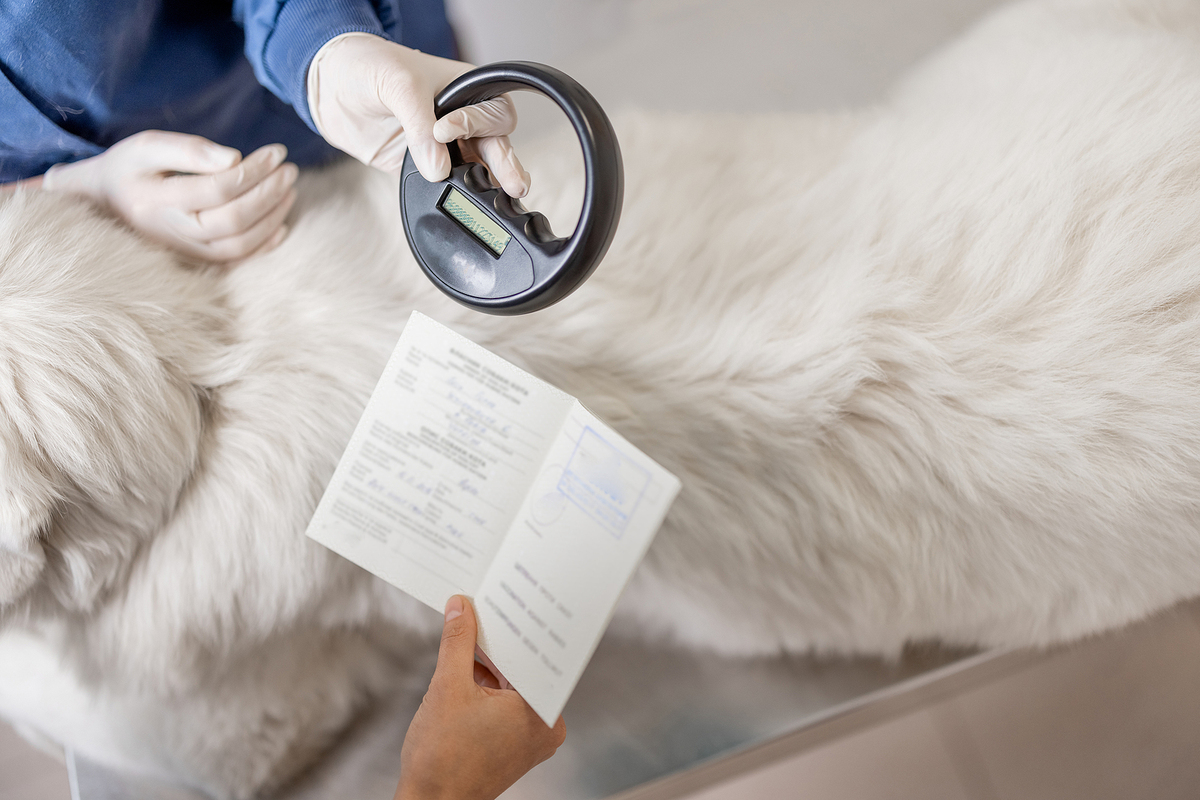How to Manage and Update Your Pet’s Microchip Information
Who knew that your dog's life and well-being could be protected by a device the size of a grain of rice? While pet microchips are usually unseen and unheard, they can be your best tool to rescue and recover your pet if they become lost.
When these embedded microchips are scanned, they pull up your dog's personal information, including their address, owner, and owner's contact information, that can help animal rescues and other organizations reconnect those missing dogs with their homes. In many cases, the cost of implanting and registering these microchips is nominal—but the protection and safety they offer can be priceless when your pet goes missing.

Here are some tips on how to check your dog's microchip number and make changes to keep that information current.
How to Register a Microchip for Your Pet
Most microchips are automatically registered at the time of their implantation. In some cases, however—especially when you've adopted a dog from a different owner—you may need to register that microchip under your name.
Fortunately, several services make this easy. The American Kennel Club offers one such service for just $19.50, giving you lifetime registration of the microchip. Your local vet may also have suggestions for services that will register your microchip for a small fee and add that information to the universal microchip database.
What Does a Pet Microchip Number Look Like?
Microchip ID numbers are issued according to a universal standard established by the American Animal Hospital Association (AAHA). These are 9, 10 or 15-digit numbers that may be inscribed on a dog tag, veterinary paperwork, or other documentation. The number is what shows up when the microchip in your pet is scanned, connecting the scanner to your owner information.
If you aren't sure if your microchip number is accurate, you can use the AAHA universal lookup tool to see if the number you have pulls up the relevant information. If you've lost the number, you may be able to recover it through your veterinary office, and/or the organization or company that implanted the microchip.
Pet Microchip Look-Up: How to Check Your Pet's Information
If your microchip has been registered, the easiest way to check this information is through the AAHA universal pet microchip lookup tool. All companies that issue and implant microchips report their information to this database, giving you a centralized destination where you—or anyone who finds your pet and scans their microchip—can pull up your contact information and other personal information for your pet.
If you think you need to update microchip information for your pet—including your address, phone number, or other personal data—you should first pull up the current microchipped data to figure out what information needs to be changed.
How Do I Change Ownership of My Dog's Microchip?
If you want to change the ownership information connected to your dog's microchip ID—which is common when new owners adopt a dog that was microchipped by a past owner—you will need to follow a process outlined by the company that issued the microchip. Certain security measures are in place to prevent potential dog thieves from taking dogs and changing their registration information.
In most cases, you will need either a signed transfer of registration form filled out and signed by both you and the previous owner, or a bill of sale from the previous owner who is registered with the dog's microchip. If this documentation is not an option, your veterinarian may also be able to write a letter to the microchip company stating that you are the new legal owner. This should give you the ability to change ownership information connected to the microchip ID.
Do You Have to Renew Your Pet Microchip?
While some pet microchip providers offer annual memberships that can be renewed over the course of your pet's life, these services aren't necessary to maintain the registration of your pet's microchip. In most cases, these memberships offer subscription-based access to supplemental services, including partial reimbursement of travel costs to be reunited with a pet, through the membership.
While some pet owners may prefer to be enrolled through this service, it isn't necessary to keep your pet's microchip active. Once the chip is installed and registered, it will continue to work throughout your pet's life.
Can a Microchip Be Removed from a Dog?
In most cases, microchips either can't be safely removed from a dog, or your local vet won't be willing to perform this procedure. Due to the size of the microchip and the invasiveness of finding and removing it from your dog, the procedure itself poses a far greater risk of complications than the microchip itself. Unless the microchip is the site of an infection or is creating some other kind of rare complication that requires medical intervention, the microchip is likely going to stay in your dog.
If you simply don't want the microchip to bring up your personal information, you can delete this information from the ID number connected to the microchip. But the microchip itself is likely to stay put.
While it's easy to forget about the microchip under your dog's skin, this small device can save your dog's life and help reunite them with their human family. Do your part to protect your pet by keeping this information up to date!


